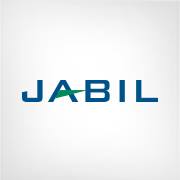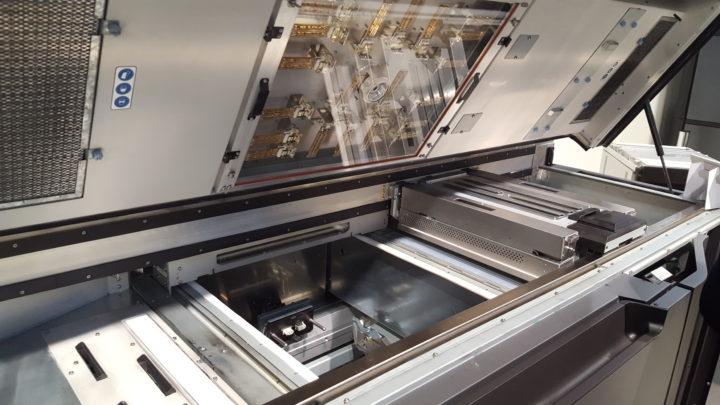 Good things come to those who wait — this may as well be the motto coming out from HP these days, as potential users the world over have been patiently awaiting the full release of production-ready Multi Jet Fusion 3D printers. From the first tease back in 2014 to the dramatic unveiling this past May, these 3D printers have been both heralded and anticipated as the market readies for an entrant with some real clout behind their name, and a new 3D printing technology set to shake things up.
Good things come to those who wait — this may as well be the motto coming out from HP these days, as potential users the world over have been patiently awaiting the full release of production-ready Multi Jet Fusion 3D printers. From the first tease back in 2014 to the dramatic unveiling this past May, these 3D printers have been both heralded and anticipated as the market readies for an entrant with some real clout behind their name, and a new 3D printing technology set to shake things up.
One aspect of the HP launch into the 3D printing industry that has caught a lot of attention has been the focus on collaboration, as the powerhouse new entrant to market worked from the start with partners to develop the new technology. Taking the technology down to the voxel level involved a lot of listening, learning — and collaborating. One of the partners HP has worked with since the start here is Jabil, a product solutions company that has been very busy in additive manufacturing lately, which has been an HP foundational customer helping HP in taking 3D printing from prototyping into a full manufacturing system.

HP partners, including Jabil’s John Dulchinos (seated at left), speaking at RAPID in May [Photo: Sarah Goehrke for 3DPrint.com]
The Jabil Blue Sky Innovation Center housing the new production units is getting ready to put them through their paces, as they work toward material qualification, process and quality validation, and supply chain integration — all working to speed up the process of New Product Integration (NPI). Jabil hopes to use their experience in manufacturing to help bring 3D printing technology into the manufacturing mainstream.“As an HP foundational customer, Jabil and HP are working together to transform 3D printing. Jabil has been at the forefront of determining how best to transition 3D printing from a prototyping tool into a full-blown solution for bringing new products to market in half the time and cost associated with traditional manufacturing methods,” Jabil noted in their recent announcement.
With news this big, as HP’s technology comes to working companies, I wanted to take our readers right to the source. While I have previously spoken with executives from the HP team, this time I sought input from their partner to hear about that side of the relationship, particularly in light of their housing of the new equipment, as partners have been anticipating installation. I had A Few Questions For Jabil, which John Dulchinos, their Vice President of Global Automation & 3D Printing, has answered, providing us insight into the partnership, the printers, and the industry at large.
Can you tell us about Jabil’s partnership with HP: how it came about, how it has benefited both partners?
Jabil and HP have been partners on a variety of manufacturing fronts for many years. When HP initially shared that it was producing a platform for additive manufacturing, it was a great fit for Jabil as we already had been studying and building 3D printing business models to empower our factories and customers.
Jabil operates thousands of injection molding machines, and spends hundreds of millions of dollars per year in the delivery of injection-molded plastic parts. As an HP foundational partner, we reviewed plastics part usage across a diverse set of industries to identify near and long-term opportunities for conversion of traditionally produced products to multi-jet fusion (MJF).
As we analyzed our supply chain with HP, we immediately recognized that it made economic sense to use HP’s Jet Fusion 3D printing technology to produce a large percentage of parts. Moving those parts over to Multi Jet Fusion represented a time and financial savings–but more importantly, it improved the overall efficiency of Jabil’s operations.
HP took careful note of our material reviews and the specifics of what the final parts required relative to fit and function. Both HP and Jabil teams have collaborated and coordinated efforts over the past year to support both product and services refinements leading up to the release of these first production units. As a result, we are uniquely positioned to help HP move 3D printing into the manufacturing mainstream, while also reinforcing Jabil’s digital transformation.
How will these first two production units be put to use in their first days?
What can we expect to see coming from Jabil as HP brings their Multi Jet Fusion 3D printing systems to market?Given the extensive evaluation and collaboration between HP and Jabil, we anticipate that these first two machines will be very quickly qualified and we’ll begin qualifying parts for use in production applications.
Work is well underway to characterize the secondary processes needed to deliver printed parts into manufacturing and final assembles. As such, we expect the two machines received this week to be producing parts in short order.
Jabil maintains production capabilities across numerous disciplines that will prove critical in integrating parts from 3D print to assembly. These include design for additive manufacturing, process development, coatings and finishes as well as exacting quality control. As this infrastructure has been honed within Jabil for 50 years, we will act as an accelerator for the MJF platform. Many of Jabil’s strategic customers are already investigating how the technology addresses the unique challenges they are facing in their respective industries.
 How soon do you realistically see 3D printing coming into mainstream use, and where will the HP 3D printing system come into play in that adoption?
How soon do you realistically see 3D printing coming into mainstream use, and where will the HP 3D printing system come into play in that adoption?
Jabil is set to accelerate the Jet Fusion 3D printers’ role in producing volume-scale parts efficiently, economically, and reliably; can you share any details on this strategy?It is important to note there is no “silver bullet” in business and that’s certainly true in manufacturing. We don’t see the majority of our manufacturing processes converting to additive manufacturing overnight. That said, given rapidly reducing product lifecycles and the competitive advantage companies achieve by getting products to market faster, additive will be adopted increasingly in a vast array of applications across the supply chain. This is especially true as technology suppliers like HP bring more cost-effective solutions to market.
We see the MJF technology providing the greatest differentiation at the beginning of the product lifecycle. This includes design, tooling and fixturing as well as supporting a growing interest around digital spares and advanced maintenance, repair and obsolescence (MRO) strategies.
While the printing technology is central to all the areas mentioned above, infrastructure, technical capability and manufacturing experience will be required to address the risks associated with adopting advanced technologies. Jabil and HP have established a tremendous synergy by marrying a disruptive technology with a manufacturing partner that will assist in accelerating the adoption within an otherwise risk adverse industry.
Additive technologies, such as MJF, in combination with rapidly advancing material science, design practices and increasingly intelligent supply chains stand to unlock amazing possibilities that manufacturers were previously unable to achieve. These forces are already being integrated to redefine manufacturing. At Jabil, we are creating geometries, parts and business models that are completely different than what the market has come to know.
Today, Jabil has over 100 factories throughout the world. Ten years from now, it’s conceivable that we might have 1,000 factories–or 5,000 factories–all smaller, and each in a location that is closer to where our end-markets are and where people buy. This allows us to more fully produce products on demand, which ultimately is the most compelling aspect of 3D printing’s value proposition.
As 3D printing continues its path toward finished products manufacturing, we can only expect to continue to hear more from both Jabil and HP as this high-speed trajectory is sure to continue gaining momentum. HP’s unique technology, developed through such critical partnership efforts, promises unprecedented speed in manufacturing end-use parts as well as even-more-rapid rapid prototyping capabilities. With the first production units in place on this continent, a new age in 3D printing may be finally dawning, as the tech becomes ever more mainstream.
Below are videos of HP’s 3D printing technology from formnext in Germany last month, and from RAPID in the spring:
Discuss in the Jabil forum at 3DPB.com.
Subscribe to Our Email Newsletter
Stay up-to-date on all the latest news from the 3D printing industry and receive information and offers from third party vendors.
You May Also Like
3D Printing Unpeeled: New Arkema Material for HP, Saddle and Macro MEMS
A new Arkema material for MJF is said to reduce costs per part by up to 25% and have an 85% reusability ratio. HP 3D HR PA 12 S has been...
3D Printing News Briefs, January 20, 2024: FDM, LPBF, Underwater 3D Printer, Racing, & More
We’re starting off with a process certification in today’s 3D Printing News Briefs, and then moving on to research about solute trapping, laser powder bed fusion, and then moving on...
3D Printing Webinar and Event Roundup: December 3, 2023
We’ve got plenty of events and webinars coming up for you this week! Quickparts is having a Manufacturing Roadshow, America Makes is holding a Member Town Hall, Stratafest makes two...
Formnext 2023 Day Three: Slam Dunk
I’m high—high on trade show. I’ve met numerous new faces and reconnected with old friends, creating an absolutely wonderful atmosphere. The excitement is palpable over several emerging developments. The high...



































